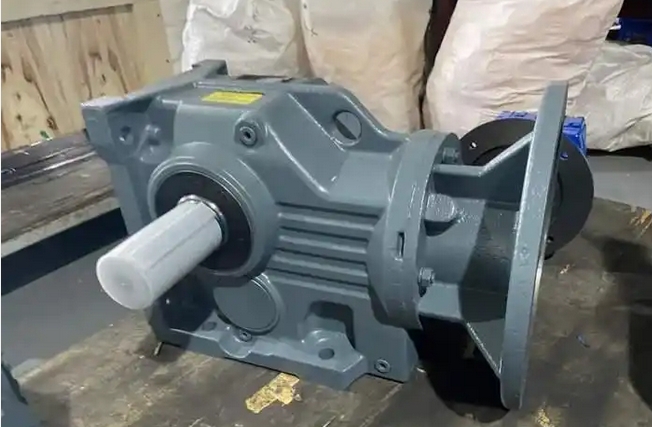The lubrication system structure of the GRF107-Y30-4P6.66-M4 reducer
The GRF107-Y30-4P6.66-M4 reducer is mainly used to reduce speed and increase torque to meet the needs of different working machinery. The lubrication system is crucial for ensuring the normal operation of the gearbox, reducing component wear, and extending its service life. Below is a detailed introduction to its lubrication system structure:
1. Lubricating oil storage section

Oil tank: This is a container for storing lubricating oil, usually located at the lower part of the gearbox. The oil tank has sufficient capacity to ensure that the gearbox has sufficient lubricating oil supply during normal operation. At the same time, the design of the fuel tank also considers the need for heat dissipation, and its larger surface area helps the lubricating oil dissipate heat to the surrounding environment. For example, in the case of long-term continuous operation, the oil tank can help maintain the temperature of the lubricating oil within an appropriate range, preventing the performance of the lubricating oil from deteriorating due to excessive oil temperature.
Oil level indicator: Generally installed on the side of the oil tank, it can intuitively display the level height of lubricating oil in the tank. By observing the oil level indicator, operators can timely understand the inventory of lubricating oil and determine whether it is necessary to add lubricating oil, avoiding the aggravation of wear on the gearbox components due to lack of oil.
2. Lubricating oil delivery section
Oil pump: The oil pump is the power source of the lubrication system, and its function is to extract lubricating oil from the oil tank and deliver it to the parts that need lubrication. For the GRF107-Y30-4P6.66-M4 reducer, gear pumps or vane pumps are usually used as oil pumps, which have the advantages of compact structure, reliable operation, and stable flow rate. The oil pump is driven by the input shaft of the reducer or a specialized driving device to ensure continuous supply of lubricating oil during the operation of the reducer.
Oil pipe: The oil pipe is responsible for delivering the lubricating oil extracted by the oil pump to various lubrication points. It has certain pressure resistance and corrosion resistance to ensure the smooth passage of lubricating oil. The arrangement of oil pipes is reasonable, minimizing bending and branching as much as possible to reduce the resistance of lubricating oil flow and improve transportation efficiency.
3. Lubricating oil filtration section
Filter: Installed at the appropriate position of the oil pump suction port or oil pipe, used to filter impurities and pollutants in lubricating oil. Filters usually use paper or metal mesh filters, which can effectively intercept larger particles such as metal debris, dust, etc. Regularly replacing or cleaning filters is crucial for ensuring the normal operation of the lubrication system. If the filter is clogged, it will cause difficulty in oil suction of the oil pump, affect the delivery of lubricating oil, and may even damage the oil pump.
4. Lubricating oil distribution section
Oil nozzle and oil passage: The oil nozzle is installed at the parts that require lubrication, such as gear meshing, bearings, etc. The oil passage is a channel machined inside the housing of the reducer, which guides the lubricating oil delivered by the oil pipe to various oil nozzles. The design of the oil nozzle and oil passage ensures that the lubricating oil is accurately sprayed or dripped onto the parts that need lubrication, forming a good lubricating film and reducing friction and wear between components.

